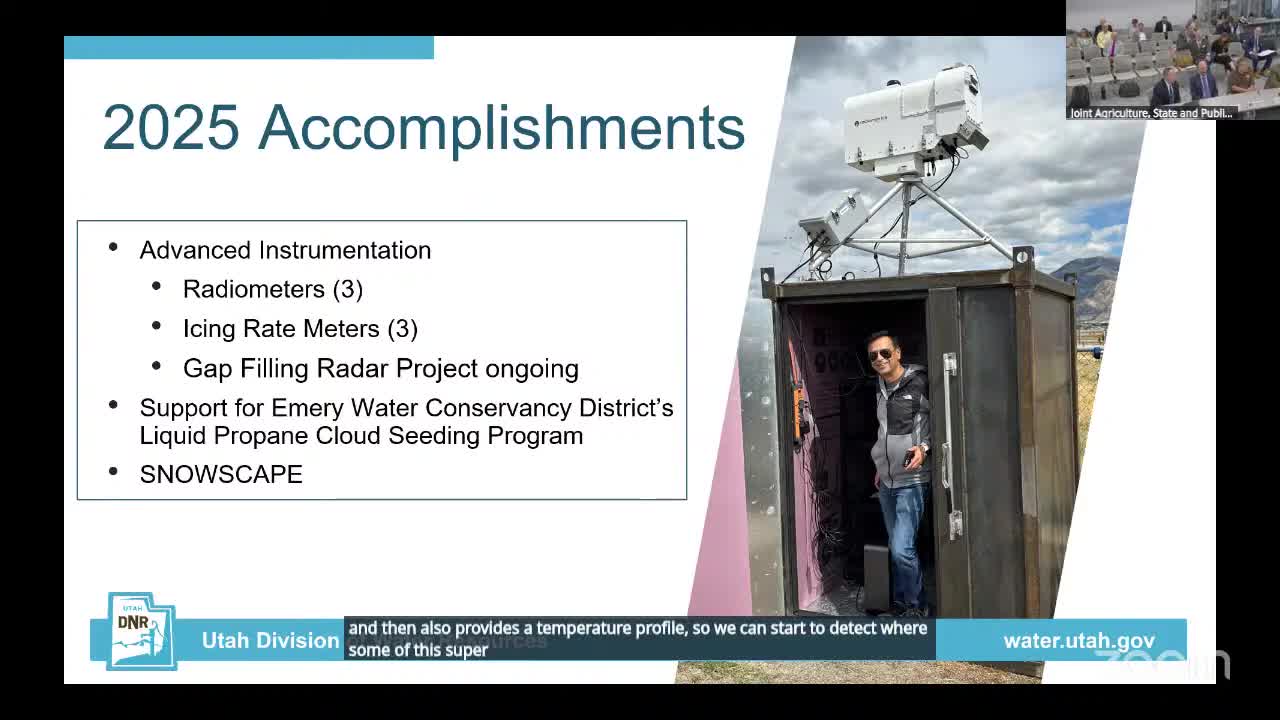
This article was created by AI using a video recording of the meeting. It summarizes the key points discussed, but for full details and context, please refer to the video of the full meeting. Link to Full Meeting
One of the key topics was the installation of additional icing rate meters, which enhance the ability to monitor precipitation types, particularly in mountainous regions where traditional coverage is limited. These meters allow for better targeting of cloud seeding efforts, particularly in conditions conducive to freezing rain. The discussion emphasized the importance of precise data collection in managing water resources effectively.
The committee also explored a gap-filling radar project aimed at improving weather monitoring without the financial burden of state ownership. This initiative involves a private company that will maintain the radars while providing data to state agencies, enhancing flood and disaster warnings and aiding in water supply forecasting for dams and reservoirs.
Another innovative approach discussed was the use of liquid propane for cloud seeding, a method currently operational in Central Utah. This technique, which creates ice from vapor, is being evaluated for its potential to increase precipitation in specific areas, such as ski resorts and small canyons.
The meeting also introduced the "Snowscape" project, which aims to establish a scientific framework for evaluating cloud seeding's effectiveness. This initiative involves collaboration with several academic institutions and focuses on high-resolution data collection to better understand precipitation processes and the impact of cloud seeding on snowpack and water runoff.
Funding for these initiatives has seen a significant increase, rising from $350,000 to $5 million annually, reflecting the urgency of addressing water scarcity issues, particularly in light of the Great Salt Lake's declining levels. The committee acknowledged the challenges of measuring the effectiveness of cloud seeding, but preliminary studies suggest a potential increase in snowpack and streamflow.
Despite the advancements and funding, some legislators expressed skepticism about the efficacy and appropriateness of government intervention in cloud seeding. Concerns were raised regarding the cost-benefit ratio and the role of the government in addressing water scarcity, suggesting a need for further education and transparency in the program's operations.
As Wyoming continues to navigate the complexities of water resource management, the discussions from this meeting underscore the state's proactive approach to leveraging technology and scientific research in addressing water scarcity challenges. The anticipated next steps include further evaluations of cloud seeding methods and ongoing collaboration with neighboring states to enhance water resource strategies.
Converted from Joint Agriculture, State and Public Lands & Water Resources, August 28, 2025 - PM meeting on August 29, 2025
Link to Full Meeting
Comments
View full meeting
This article is based on a recent meeting—watch the full video and explore the complete transcript for deeper insights into the discussion.
View full meeting